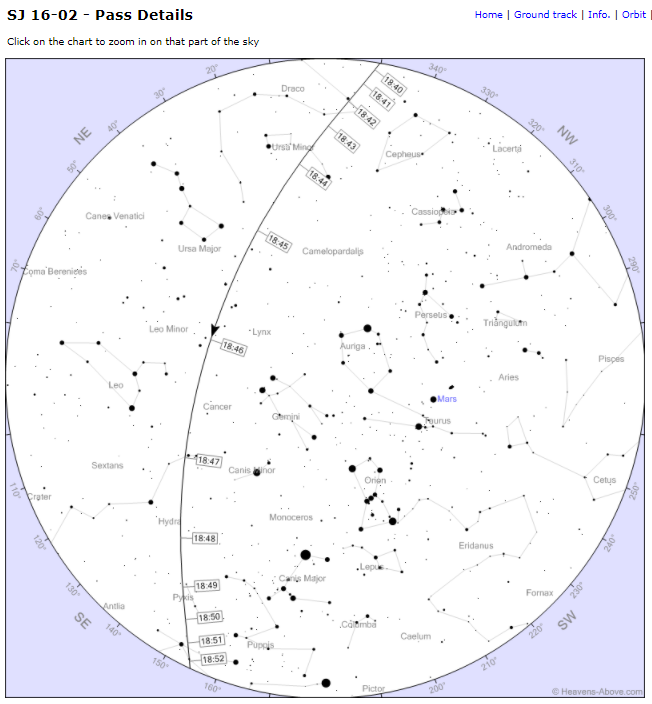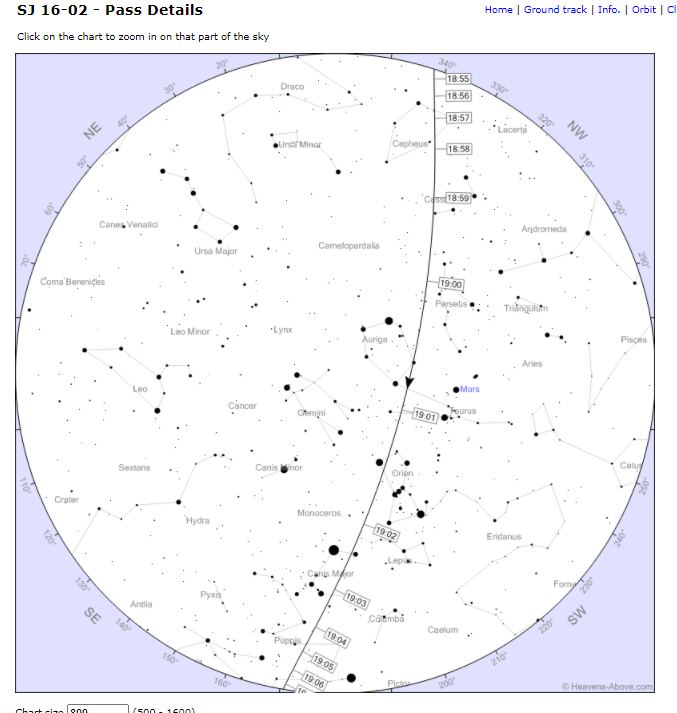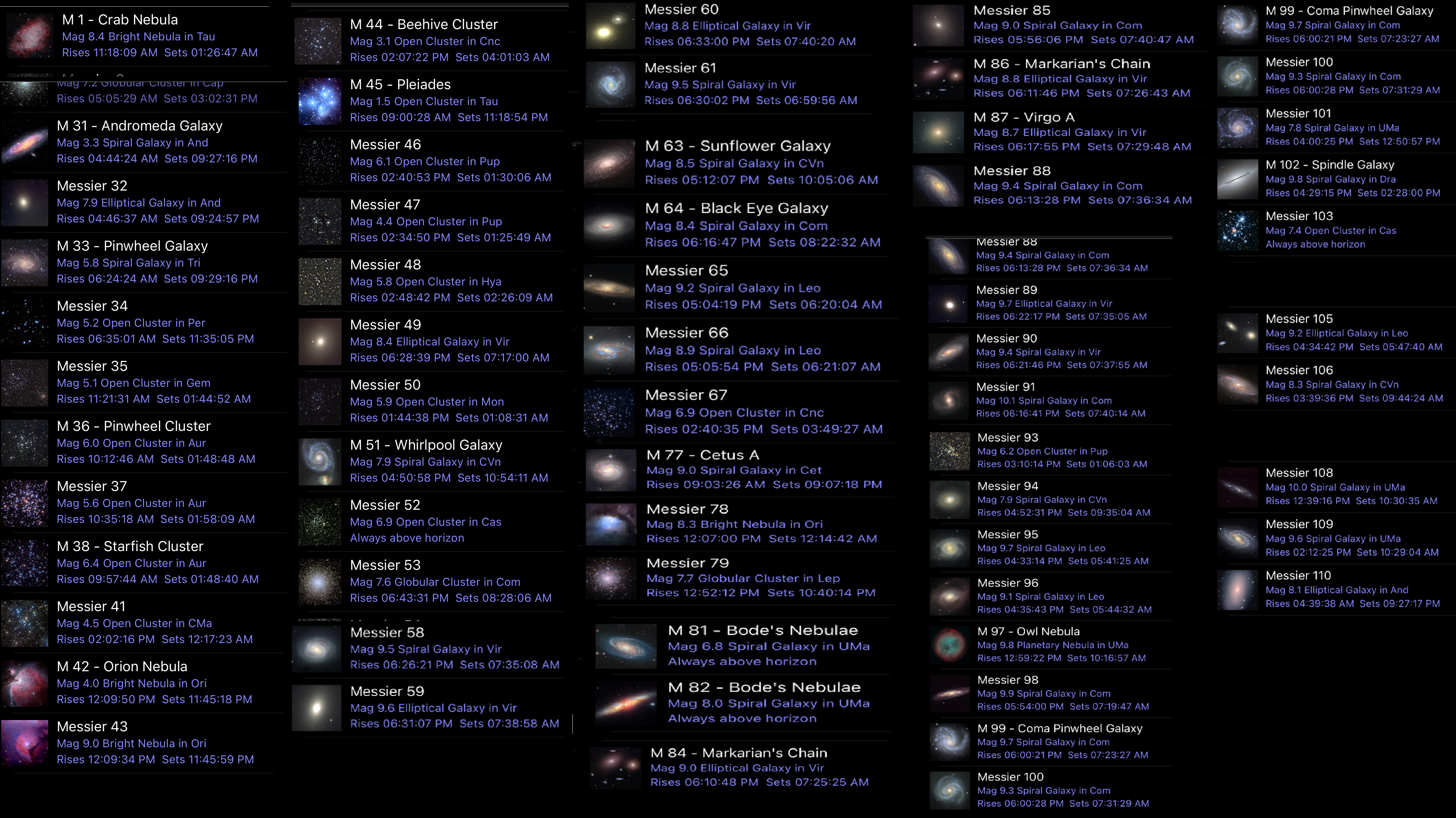What Heavenly Objects will be Visible from the Southern California Desert in March of 2021?
How we decide what to put on our Observing list is described here: Why Observing Lists?
| Time and Date: | Defined above. |
| Location: | Defined above |
| Sky Brightness: | Reasonably Dark |
| Equipment | small refractors to large reflectors |
Based on the above criteria: we can "go deep" with a lot of faint targets!
Moon and Planets
For the Moon and Planets, I have to look up what's "up" on March 13. I use SkySafari a phone app ($2.99 for a basic edition, $14.99 for a powerful addition that I run my computerized scopes with).
The Moon is 0.4 days old on March 13, setting at 6:23, meaning it will not wash out anything. Too low to observe it, but it doesn't interfere with anything. Good!
Mars is up. Given that it's months past opposition, it will not show much detail even in a large scope. Meh.
Saturn rises at 3:58a. This means, with an unobstructed eastern horizon, it is well observable before sunrise. Wake me to receive my wrath!
Jupiter rises at 4:29a. Same as Saturn, but observation time will be 30 minutes less.
Uranus sets at 9:23p. Western mountains will hide it earlier than that. Uranus might be a decent sight through a larger scope (8", 10" etc.)
Neptune is a miss.
Deep Sky Objects
Deep Sky Objects (DSOs) are objects beyond the solar system - other than individual stars. These include galaxies, nebulae, star clusters (open and globular), and pretty much everything else.
There are a LOT of resources that list "what's up" for a given night. Here I used SkySafari to just grab the Messier List for the night of Saturday March 13. I'm using screenshots so you can see the thumbnails.
That's a LOT of targets! And it's not all. Those are just the Messier Objects
Here are the results for a search of NGC Galaxies with a brightness greater than Magnitude 9:

Notice the information in the thumbnails: Catalog Number, Common Name, brightness (magnitude), type, Constellation, and Rise and Set times.
Narrow it Down?
That's a lot of targets!
Some will not be visible in the small refractors.
This is where some "experience" comes in handy. Here are the "best objects" visible in even the smaller scopes.
M31 - The Andromeda Galaxy. Target this one early as it will disappear behind the mountains early.Here's how to find it: M31 Star Chart
M42 - The Great Orion Nebula. You can see this from home, but here in the desert: wow! Here's how to find it: M42 Star Chart
M51 - The Whirlpool Galaxy. You've seen the Hubble images. Even though it's "just" faint grey, it's a great example of a face-on spiral galaxy. Stunning! Here's how to find it: M51 Star Chart
M81 and M82 - A face-on and an edge-on galaxy in the same field of view! Here's how to find it:
NGC 253 - A great galaxy (that I always forget about because it's not a Messier object).
Any Open Star Cluster is a good target in small scopes. The Pleiades (M45) in fact is better in a small scope, because the field of view can fit the whole cluster in.
Any Globular Cluster is a good target in any scope in a dark sky. Small scopes will find "the fuzzy"; large scopes will resolve more stars in the core.
Special Guest!
Satellites are always passing overhead, they are most visible when the sky is dark, but they're still in direct sunlight. Apps and websites list bright satellite passes.
Here's the brightest for Friday (below). It returns Saturday (bottom). Note the times are in 24:00 format.


